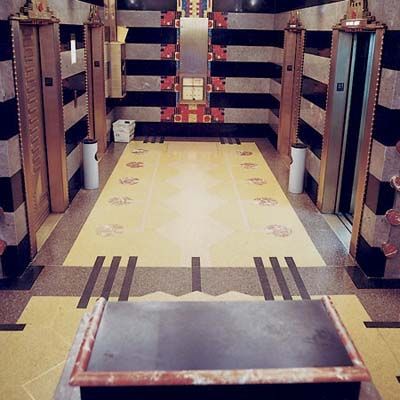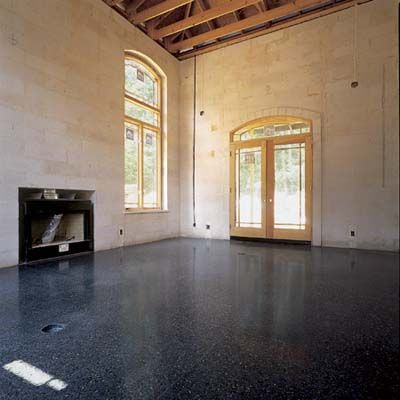
Terrazzo flooring typically consists of chips of marble or glass embedded in tinted cement, ground smooth and polished to a sheen. Due to its durability and many design possibilities, terrazzo is a popular choice for both residential and commercial applications.
In this guide, we’ll explore the history of terrazzo flooring, the most common types, the installation process, and required maintenance to help you determine if this flooring option is right for your space.
What Is Terrazzo Flooring?
Terrazzo flooring is made by embedding small pieces of marble, quartz, granite, glass, or other suitable chips in cement or another type of binder. The mixture is poured, cured, and then ground and polished to a smooth surface. This process creates a durable, long-lasting floor with a unique, speckled appearance that is highly customizable. Terrazzo floors are known for their strength, versatility, and ability to withstand heavy foot traffic.
Types of Terrazzo Flooring
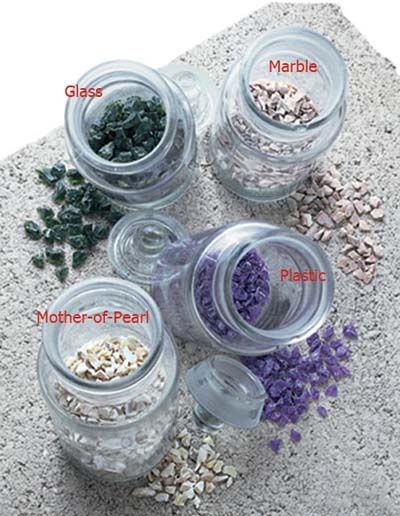
Terrazzo flooring comes in several varieties, each with its own unique characteristics and applications.
Traditional Cement-Based Terrazzo
Cement-based terrazzo consists of marble chips or other aggregates mixed with Portland cement, poured over a concrete slab. This type of terrazzo is known for its durability and is often used in high-traffic areas. Installing cement-based terrazzo is labor-intensive and requires skilled craftsmen.
Epoxy Terrazzo
Epoxy terrazzo uses epoxy resin instead of cement as the binder. This type of terrazzo is thinner, lighter, and more flexible than its cement-based counterpart. Epoxy terrazzo allows for a broader range of color options and can incorporate a variety of aggregates, including recycled glass and metal. It’s particularly popular in commercial settings due to its chemical resistance. However, epoxy is not suitable for outdoor spaces as it will peel and fade.
Precast Terrazzo Tiles
Precast terrazzo tiles are the least expensive terrazzo flooring type. These tiles are manufactured off-site and can be installed much like traditional tiles. They may not offer the seamless look of poured-in-place terrazzo, but they provide a more cost-effective and easier-to-install alternative.
Advantages of Terrazzo Flooring
Terrazzo flooring offers numerous benefits that have contributed to its enduring popularity, including its durability, design versatility, and eco-friendliness.
Durability and Longevity
Terrazzo flooring is its exceptionally durable. When properly installed and maintained, terrazzo floors can last up to 100 years and potentially longer. This longevity is due to the hard-wearing nature of the materials used in its composition, such as marble chips and cement or epoxy binders. Terrazzo’s strength makes it resistant to cracks, chips, and other forms of damage that might affect other flooring types.
Design Versatility
With an almost infinite combination of colors and patterns available, terrazzo can be customized to suit any aesthetic preference or design scheme. Options range from subtle, monochromatic designs to bold, multicolored patterns. This versatility makes it a favorite among architects and interior designers for creating unique, eye-catching floors.
Eco-Friendly Options
Many terrazzo floors incorporate recycled materials such as glass, plastic, or metal as aggregates. Additionally, terrazzo’s longevity means fewer replacements over time, reducing waste and resource consumption. Some modern terrazzo installations also use low-VOC (volatile organic compound) epoxy binders, contributing to better indoor air quality.
Potential Drawbacks of Terrazzo
While terrazzo flooring offers numerous benefits, it also has some drawbacks.
Cost Considerations
One of the primary concerns for many homeowners and builders is the cost of terrazzo flooring. Traditional poured-in-place terrazzo can be relatively expensive, with costs starting at around $9 per square foot for basic premade tiles and increasing significantly (as high as $35 per square foot or more) for more complex patterns or premium materials, according to Angi. The high cost is largely due to the labor-intensive installation process, which requires skilled craftsmen and specialized equipment.
Installation Complexity
Installing terrazzo flooring is complex and requires expertise and precision. The installation involves multiple steps, including subfloor preparation, pouring the terrazzo mixture, and extensive grinding and polishing. This complexity contributes to the higher cost and means that DIY installation is generally not feasible for most homeowners. The installation process can also be time-consuming, potentially causing disruptions in residential or commercial spaces.
Maintenance Requirements
While terrazzo is known for its durability, it does require regular maintenance to keep it looking its best. Daily sweeping or dust mopping is recommended, as well as weekly cleaning with a pH-neutral solution.
Periodic deep cleaning and resealing may be required, depending on the type of terrazzo and its location. In some cases, professional maintenance may be needed to address scratches or stains, which can add to the long-term cost of owning terrazzo floors.
Comparing Terrazzo To Other Flooring Options
To fully appreciate the value of terrazzo flooring, it’s helpful to compare it with other popular flooring materials.
Terrazzo vs. Marble
Both terrazzo and marble offer elegant, high-end flooring solutions. Marble is prized for its natural beauty and unique veining patterns, while terrazzo offers more design flexibility and customization options.
In terms of durability, terrazzo often outperforms marble, as it’s less prone to etching and staining. Terrazzo is also generally more slip-resistant than polished marble. However, marble may have a higher resale value due to its perceived luxury status.
Terrazzo vs. Tile
Ceramic or porcelain tile is another popular flooring option that, like terrazzo, offers durability and water resistance. Tile installation is typically less complex and less expensive than poured terrazzo. However, terrazzo provides a seamless look that tile can’t match, and it offers greater design flexibility.
While both materials are long-lasting, terrazzo often has a longer lifespan and may require less maintenance over time, particularly in terms of grout cleaning and repair.
Terrazzo vs. Hardwood
Hardwood flooring provides a warm, natural aesthetic that many homeowners love. It’s generally less expensive to install than terrazzo and can be refinished multiple times. However, hardwood is more susceptible to scratches, dents, and water damage.
Terrazzo also offers better longevity in high-traffic areas and requires less maintenance over time. While hardwood can be refinished to change its appearance, terrazzo offers more initial design options but is more difficult to change once installed.
Is Terrazzo Worth the Investment?
While terrazzo is more expensive upfront than other flooring options, its long-term value can justify the initial cost.
The price of terrazzo flooring can vary significantly based on factors such as the type (cement-based, epoxy, or precast tiles), design complexity, and the installation method. According to Angi traditional cement terrazzo can cost between $15 and $25 per square foot for materials and labor. However, this cost can increase for more intricate designs or premium materials.
Despite the higher initial investment, terrazzo offers excellent value over time due to its exceptional durability and longevity. A well-maintained terrazzo floor can last for decades, even in high-traffic areas, potentially outlasting several installations of less durable flooring materials.
Choosing the Right Terrazzo for Your Space
Selecting the perfect terrazzo for your space involves considering both visual and practical factors. The right choice can enhance your interior design while meeting the area’s functional needs.
Color and Aggregate Selection
The color palette and aggregate mix of your terrazzo can dramatically impact the overall look of your space. Consider the existing color scheme of your space and whether you want the terrazzo to complement or contrast with it. Lighter colors can make a space feel larger and brighter, while darker tones can add depth and sophistication.
The aggregate selection also plays a crucial role in the final appearance. Traditional marble chips offer a classic look, while glass or metal aggregates can create a more modern, sparkling effect. The size of the aggregate chips can also vary, with larger chips creating a bolder, more dramatic look and smaller chips resulting in a more subtle, uniform appearance.
Pattern and Design Considerations
The placement of divider strips can create geometric patterns or more organic shapes within the floor. Consider whether you want a simple, uniform look or a more complex design that incorporates multiple colors or patterns.
For commercial spaces, terrazzo offers the opportunity to incorporate logos or specific designs into the floor. In residential settings, you might consider using different terrazzo designs to delineate various areas within a larger room, such as creating a border around the perimeter or a medallion in the center. In bathrooms, terrazzo can be used to create visually appealing shower surrounds or backsplashes.
How to Install Terrazzo Flooring
Installing terrazzo flooring is a complex process that requires skill, precision, and specialized equipment. While it’s generally recommended to hire professionals for terrazzo installation, understanding the process can help you appreciate the craftsmanship involved and make informed decisions about your flooring project.
Step 1: Prepare the Subfloor
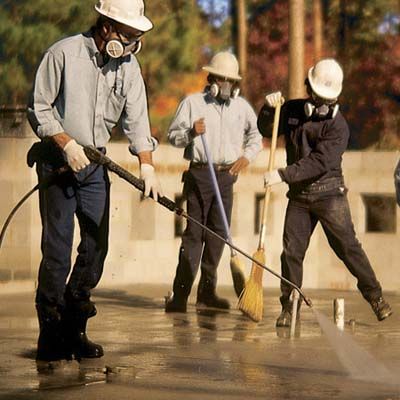
The first step in terrazzo installation is thorough subfloor preparation. This involves meticulously cleaning the subfloor (typically a concrete slab). Workers power-wash and sweep the slab to remove loose debris, followed by a scrub down with acid to kill algae, which can weaken the bond between the concrete and the terrazzo. Proper preparation ensures a strong, long-lasting bond between the terrazzo and the subfloor.
Step 2: Install Divider Strips
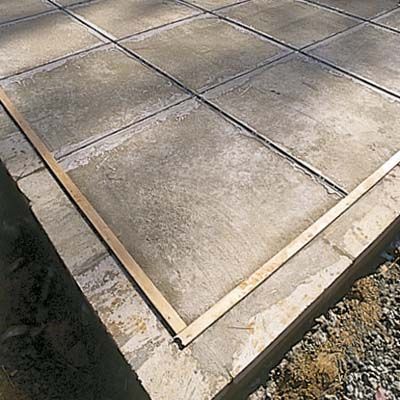
Next, zinc dividers are cemented to the slab, creating a grid of 3-foot squares. To stop wet terrazzo from flowing into the parts of the slab where walls will be built, plywood strips are temporarily fastened to the perimeter to contain the wet terrazzo mixture. After that, divider strips are installed to create a grid pattern and control cracking. These strips not only serve a functional purpose but also contribute to the overall design of the terrazzo floor.
Steps 3: Mix and Pour the Terrazzo
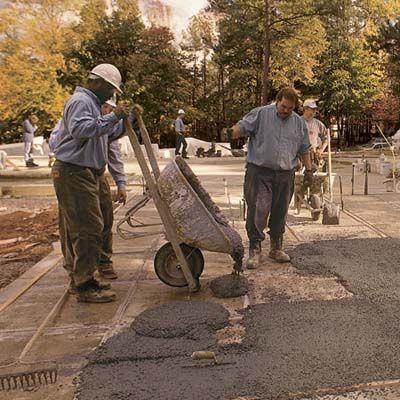
The terrazzo mixture is prepared according to a precise recipe, combining cement, aggregates, and pigments. The mixture is then poured onto the prepared subfloor and spread evenly. Contractors use heavy rollers and hand trowels to compress the mixture and ensure even distribution.
Step 4: Grinding and Polishing

After the terrazzo has cured for several days, grinding and polishing are crucial for achieving the smooth, glossy finish characteristic of terrazzo floors. This is achieved by using heavy grinders with progressively finer diamond-grit stones. Smaller grinders are used for corners and around obstacles. The process concludes with a final polishing to bring out the shine and reveal the full beauty of the terrazzo design.
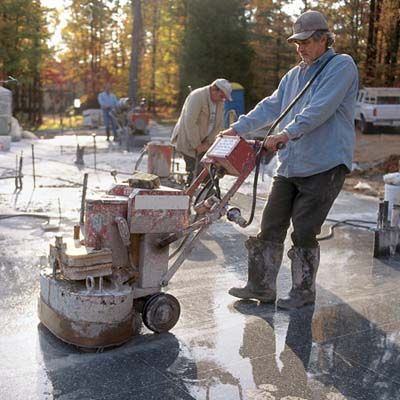
Maintaining Your Terrazzo Floor
With the right care, terrazzo can retain its luster and durability for decades. Below are some essential maintenance practices to keep your terrazzo floor in top condition.
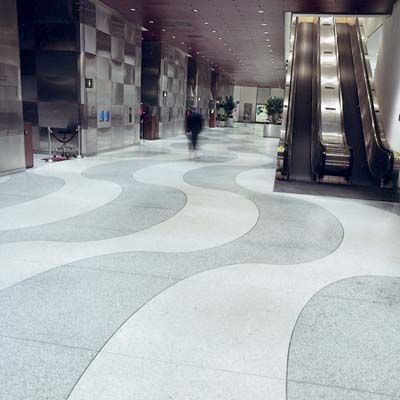
Daily Cleaning
Simple cleaning methods are usually sufficient for everyday maintenance. Sweep or dust mop the floor daily to remove loose dirt and debris that could scratch the surface. For wet cleaning, use a damp mop with a pH-neutral cleaner specifically designed for terrazzo.
Avoid using harsh chemicals or abrasive cleaning tools that could damage the floor’s finish. Promptly clean up spills to prevent staining, especially from acidic substances like wine or citrus juices.
Periodic Deep Cleaning
While daily maintenance keeps your terrazzo floor looking good, periodic deep cleaning is necessary to maintain its shine and remove stubborn dirt. Perform a more thorough cleaning every few months or as needed, depending on foot traffic. Use a specialized terrazzo cleaner and a soft-bristled brush or machine to gently scrub the floor. After cleaning, rinse thoroughly with clean water and dry the surface to prevent water spots.
Addressing Scratches and Stains
Despite its durability, terrazzo can develop scratches or stains over time. For minor scratches, professional buffing may be sufficient to restore the surface. Deeper scratches or chips may require filling with a color-matched epoxy.
For stains, try cleaning with a cleaner made specifically for terrazzo. If these methods don’t work, or for extensive damage, it’s best to consult a professional terrazzo restoration specialist. They can assess the damage and recommend appropriate treatments, which may include re-grinding and re-polishing the floor.
Resealing
A terrazzo floor requires resealing every so often to maintain its durability and appearance. The frequency of resealing depends on the amount of foot traffic the floor sees. A popular public space may need to reseal twice a year, while a terrazzo floor in a private residence may only need resealing every five years. You can tell that it is time to reseal a terrazzo floor if it seems to be staining more easily or if you notice thin patches where the sealant is visibly lacking. If you are looking for more tips on how to reseal or restore your floor, check out our guide on How to Restore Terrazzo Floors.
Our Conclusion
Terrazzo flooring is a versatile and durable option that brings unique aesthetic appeal to any space. Understanding its types, installation process, and maintenance requirements can help you make an informed decision when considering this flooring option. While the initial investment may be higher, terrazzo’s longevity, design flexibility, and low maintenance needs make it a valuable choice for residential and commercial applications.
